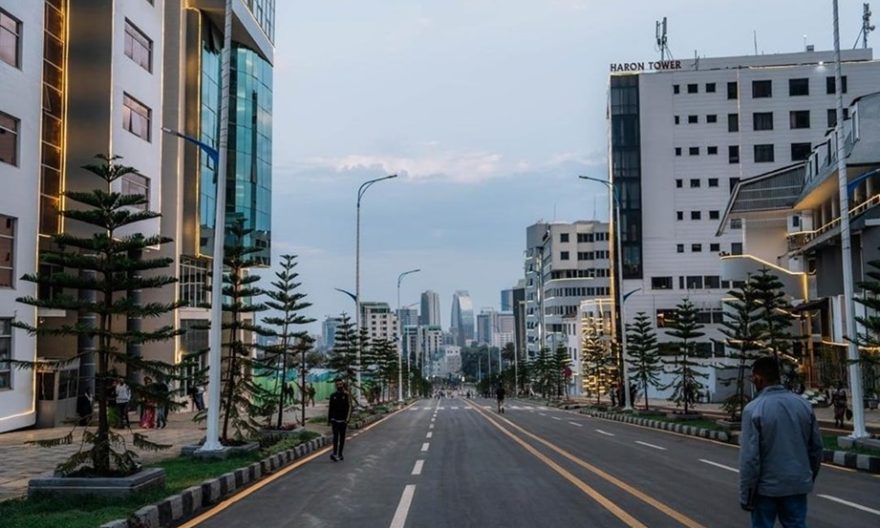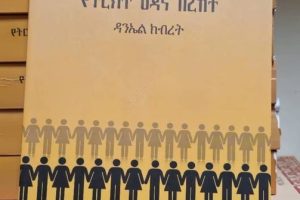
Addis Ababa, which is a historical City, the seat of the African Union and other international organizations, was not very strategically planned and not built with world-class standards. Even though its name meant a new flower its real image has been way below what is expected from a historical capital city. Even if the people’s lifestyle kept the original culture of the society, most of the neighborhoods were full of buildings that did not reflect culture or modernity. The country’s capital, the seat of the African Union and international diplomats, has not been in a development that matches its name and age. The city’s buildings are not attractive due to its lack of modern planning. The roads in the city were not suitable for transportation due to a lack of proper planning. The color of the buildings was painted according to the owner’s wishes rather than the guidelines of the city plan. Apart from the roadside houses, the old houses in the city do not even have toilets. The development is being carried out in six city districts and five selected corridors covering more than 43 kilometers of land. Its work is research-based and includes development infrastructure in an organized manner.
In connection with this development, the residents of the city, especially in the Piassa area, who have been living in dilapidated houses and repaired pastels for many years, have been worried about the coming summer and have suffered without toilets. The City Administration has provided standard housing to these residents and the area has been developed.
The area was a serious concern not only for its residents but also for people from different parts of the country. While the crumbling houses and the narrow streets were an opportunity for theft and other crimes, it was a serious concern for many.
Recovering stolen property, including cell phones, is a nightmare. Commercial sex work, addictive substances, and other heinous acts have been committed in this area which is the foundation of the city of Addis Ababa.
Currently, the city administration has made Addis Ababa a second-born city with the development of the corridor. The standard streets are painted in the same colors, giving the city special beauty.
The interior of the city, including the street corners, which used to host theft, robbery, and various crimes, is decorated with lights until it is difficult to distinguish between day and night. The corridor development structures, including the Adwa a Victory Memorial, have made Addis Ababa resemble some of the cities of developed countries
Not only have the roads been expanded and beautified, but toilets, green spaces, and toilets have been built to attract people and add to the beauty of the city. The banks of the rivers are wonderfully developed and call for recreation from afar. The trapped residents of the city regularly gather in the evenings in the daylight, exchanging social and economic experiences.
The development work of this corridor is “The ability to do and execute” as Prime Minister Abiy Ahmed (PhD) said, working day and night to achieve unthinkable success in four years in less than four months. It has also created opportunities and work experience for thousands of people.
Regions have also started implementing corridor development in their cities by copying the experience from Addis Ababa. If this development is widely implemented, economic and social change can be brought about in Ethiopia in a short period. The corridor development work has removed garbage further enhancing the beauty of the city and creating a comfortable and clean environment for the residents.
As to the scholars, culture could be tangible or intangible and is supposed to reflect the original identity, or history of a society, which makes it unique from others. In this case, Addis Ababa had some tangible and historical cultural values which some buildings could reflect. But most of its buildings would only reflect the dreary images of deep-rooted poverty.
Most ancient cities like Paris, Rome, Athens, etc. were well known for inspiring painters, authors, poets, musicians to create some art. Such cities have been magnetic for tourists.
When it comes to Addis Ababa, the city has been decaying with unplanned constructions and slums for many years. There weren’t that many inspiring sites in the city for the fact that it didn’t have that magnetic quality or beauty that meets its name. That’s why Prime Minister Abiy Ahmed initiated city and corridor development projects and the officials of the City Administration started working day and night to change the old image of Addis Ababa.
As a result, some inspiring changes are being witnessed and many residents seem to be interested in what is happening to the city. Some months ago, one could describe Addis Ababa as a big ocean of slums where the streets are always full of pedestrians and vehicles move neck to neck on the same narrow roads. Even if there were pedestrian roads, either they are narrow or have holes here and there, let alone people with disabilities, move hard even capable people. However, this reality has changed, and people seem to have found the desired standard of the city, which meets its name.
Tilahun Ashagre is a retired soldier who has lost his legs in a battle. He moves from place to place in a wheelchair. He is one of the residents who is inspired by the new beauty of the City. He lives in a Tore Hiloche Military recuperating center around Sar Bet, one of the neighborhoods where corridor development takes place. He says he has been a resident of Addis since the 1978 Ethiopian Calendar. “For many years, people and cars used to move in the same lane with the smoke of the cars bellowing on our faces. It was also difficult for individuals like me, for there was no road built for people who needed special support. Following the corridor development, so much has changed. Addis Ababa is turning beautiful. Most of all, it is fantastic for me to be moving in a wheelchair lane.”
Several new infrastructures and facilities are under construction, which make the city meet the original interpretation of its name.
BY NAOL GIRMA
THE ETHIOPIAN HERALD THURSDAY 11 JULY 2024





